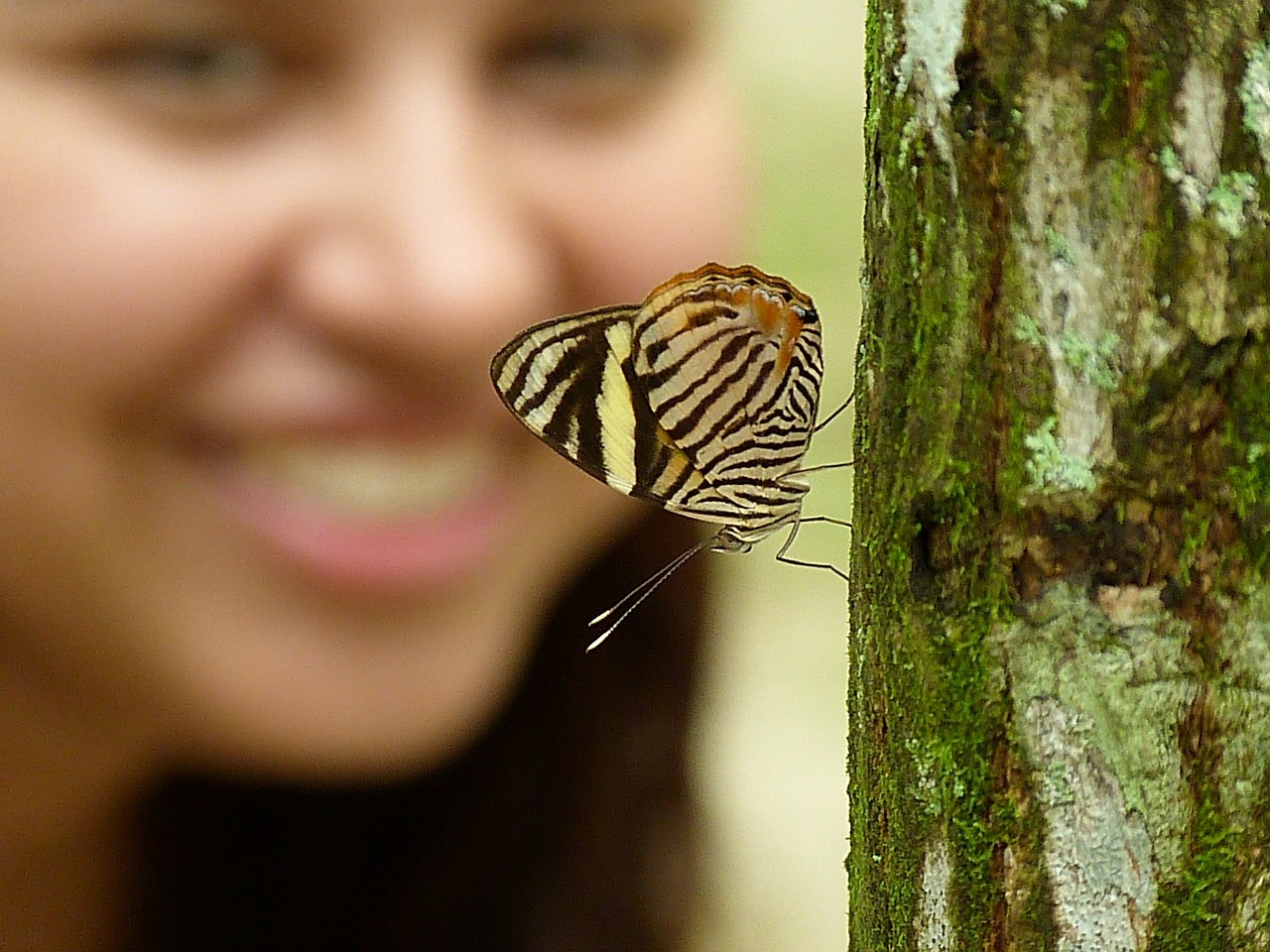- Calls to this hotline are currently being directed to Within Health or Eating Disorder Solutions
- Representatives are standing by 24/7 to help answer your questions
- All calls are confidential and HIPAA compliant
- There is no obligation or cost to call
- Eating Disorder Hope does not receive any commissions or fees dependent upon which provider you select
- Additional treatment providers are located on our directory or samhsa.gov
The Object of Emotional Comfort – A Butterfly’s Process is a Journey
Article Contributed by Staff of The Meadows Ranch

When I talk slowly and calmly, I notice they calm as well. Sometimes they calm in a moment, other times longer as they work it out within themselves, and we figure out together what they need.
Each child has his or her own unique way of dealing with their emotional and relational world. One recovers quickly from being upset; one will discharge into humor, and the other holds on to things like they just stick to him. Deep thinking and sensitive, he has been this way since I can remember seeing his personality at 4 months old.
My children soothe differently as well. One reaches for a worn teddy bear, one a sock monkey, and the other a silky blue blanket. One wants a hug to help ground himself, and another needs a few minutes alone.
Learning How to Cope
My precious children make me think about the precious young people I work with as they make their way to find their needed soothing objects to healthfully cope with aching hearts and souls. I remember one story in particular of a young woman as she worked hard in coming to terms with letting go of her eating disorder, grieving, finding the pieces to the puzzle of her trauma background and bringing words to the reasons for her pain and anguish.
She also struggled with cutting. Since she was a teenager she recalled being unable to soothe herself, to redirect her mind in another way. It was her object of comfort.
In therapy, she worked hard to first reduce self-harming and then succeeded in completely stopping with only a few weekly thoughts that she was able to manage with healthy tools. She opened her world to loving people and to self-love. But, she was still afraid to let go of the self-harm object that she had by her side for years.
She said that she kept it in her backpack. What else do you have in that bag?, I asked. Anything else that is comforting? Well not really, books, stuff for school, she said. We talked about the power she gave to that object- its presence was an illusion of safety.
I know now it is not helpful to me, she reflected. But, there is still, somehow, comfort. I understood better than ever before as she spoke. If I let it go, really let it go, it is like a relationship. One that seems to help me survive, but actually keeps me from all my possibilities.
We talked about what she could add to her backpack that would be comforting. She needed a replacement to symbolize the true comfort that a consistent, loving and non-judgmental relationship could bring. I thought about the numbers of times per week one of my children cries… Boo hoo, mommy, Ouchy! as they run over to show me their wounds.
There is no blood, no visible wound for me to know for sure if they need first aid. I know that a mommy’s kiss helps mend that moment of anxiety or fear or just that need for touch, love, reassurance, or distraction. This young woman never had that. She could not recall one memory or one moment of being held or protected.
Band-Aids, how about Band-Aids?, I said. Would you be willing to add them into your backpack? Let’s talk about some other things that would help you.
She began to talk about all the ways she felt like people cared. We reviewed her lifeline of memories of true support.
First was when a friend realized that she was self-harming and was concerned, but did not judge her. It was when someone noticed what I needed, she said. I replied, So if someone notices that you carry this harming object, would they see what you needed for yourself through their concern?
Letting Go of the Emotional Security Blanket
Now was the point of contemplation of letting go of that emotional security blanket. What would it be like to walk free of the object you depended on for all those years? How will you manage to comfort yourself? How do you let go of all it represented? Would you have to lose those meaningful things as well? Honestly, how will you continue without the emotional security blanket?
We addressed what it is like to see herself letting go of this, putting other things in her backpack to replace it. I have something! I see it! I can visualize it! she said. A friend gave me a Butterfly I sometimes hold it at night, it is soft and squishy. The colors always remind me of warmth and hope.
A butterfly is delicate and powerful at the same time and it must come out of its cocoon when it is time, no sooner. The butterfly was given by someone who understands her and never judged her…You are like the butterfly and it is more than the butterfly, but what it represents to you, the person who gets you comforts you and cares for you. Yes, that is protection to me, she said. I can carry a Band-Aid. I like that, it makes sense to me. We smiled together.
Many individuals struggle with the battle against an eating disorder and self-harming behaviors. There are several factors involved in the development of eating disorders and self-harming behaviors. For many individuals, these developed as an inadvertent way to cope with and/or manage difficult life circumstances, emotions, loneliness, etc.
For a person who does not have appropriate and healthy ways for coping and self-soothing, these behaviors, though dangerous, may provide that temporary comfort. Ultimately, eating disorders and self-harming behaviors result in life-threatening consequences that could be potentially fatal if left untreated.
For these reasons, it is important to seek out professional help while also giving yourself grace through the process of recovery. Be aware of the potential underlying issues related to your behaviors and why they may have developed in the first place.
Finding Healing and Recovery
If you struggle as well, you are not alone and deserve to find the help you need. Seek counsel and open yourself up to taking the risk of letting others in. With the support you need, learn about why you self-harm and why you suffer. Self-harm is very serious and needs to be addressed with a team that cares for you and knows how to help you overcome your suffering.
Treatment can also support you in finding and developing positive and helpful ways in coping during times of loneliness, stress, anxiety, depression, etc. You do not need to resort to your eating disorder or self-harming behaviors as a way to manage emotional and/or mental distress.
Letting go of old things, bad relationships or old behaviors to provide the feeling of security is a multi-leveled process. It isn’t human nature to let go of all our old security blankets at once. In our humanness, we may hold onto things for years.
Like fingers hanging onto a cliff, holding on for dear life and fear of the fall. But you must figure, what are all those things you may hold on to that don’t really serve you in the long run. Will they get you to where you want to be in life? Will they help you achieve your dreams?
We all want to feel in control, and many people suffer from painful thoughts, memories, and emotions. We all feel vulnerable. Letting go is a process, grieving is also. Moving on is a gift and a challenge. It can be scary whether it is the silky blue blanket or another object of comfort, it is a journey.
Article Contributed by Staff of The Meadows Ranch:
For over 25 years, The Meadows Ranch has offered an unparalleled depth of care through its unique, comprehensive, and individualized program for treating eating disorders and co-occurring conditions affecting adolescent girls and women. Set on scenic ranch property in the healing landscape of Wickenburg, Arizona, The Meadows Ranch allows for seamless transitions between its structured multi-phase treatment. A world-class clinical team of industry experts leads the treatment approach designed to uncover and understand the “whys” of the eating disorder through a host of proven modalities. Providing individuals with tools to re-engage in a healthy relationship with food – and with themselves – disempowers eating disorders and empowers individuals with a renewed enthusiasm for life. Contact us today at 888-496-5498 and find out why The Meadows Ranch is the best choice for eating disorder treatment and recovery. For more information call 1-888-496-5498. or visit www.themeadowsranch.com.
Please Note: The information contained in this article is intended to provide readers with helpful information and inspiration. The story has been adjusted to honor and protect confidential details of all individuals. This article is not to be used to diagnose or treat. Consult licensed medical, and or mental health professionals for assistance.
Recently Reviewed by Jacquelyn Ekern, MS, LPC on July 2, 2018
Edited and Updated by Crystal Karges, RD on August 29, 2017
Published on EatingDisorderHope.com, Eating Disorder Information Help & Resources


